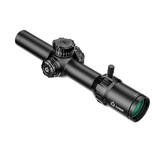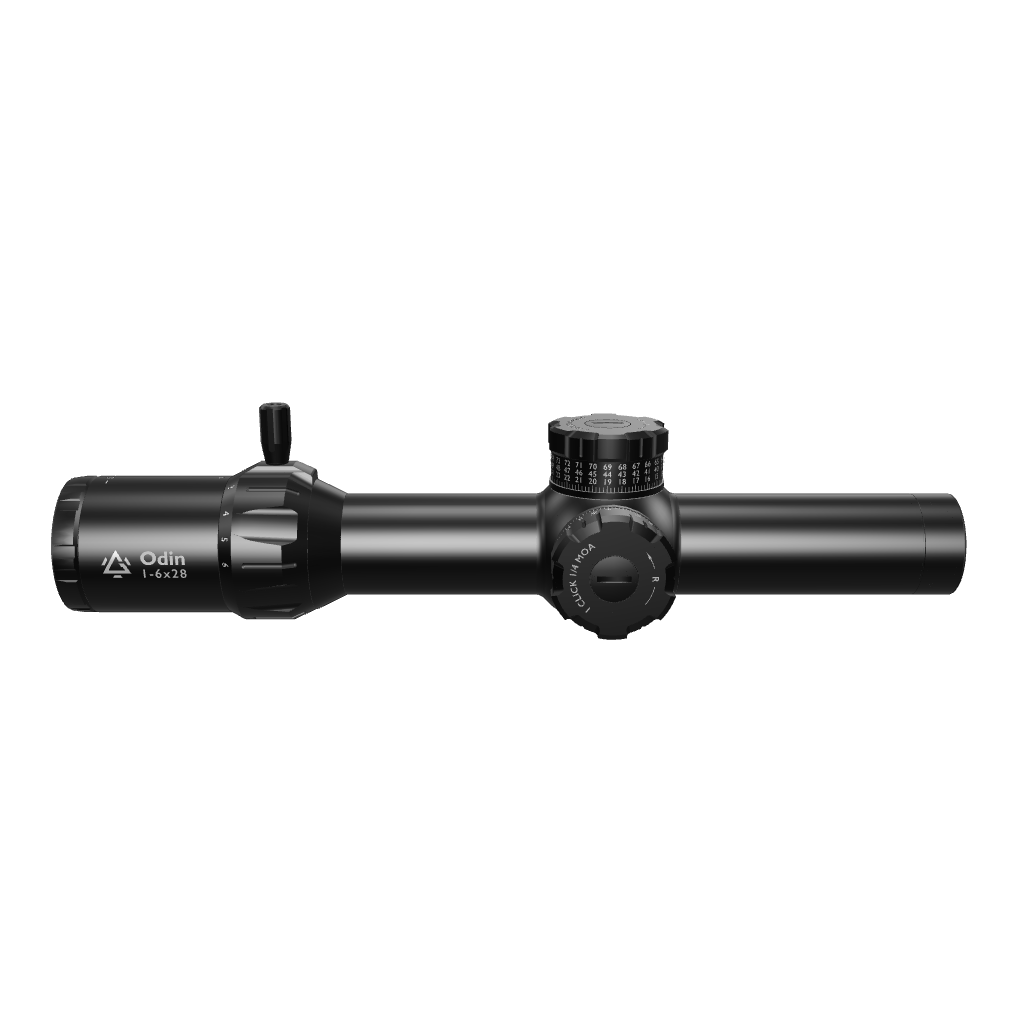8 Common Questions About LPVOs
Though they have been out since the 1920s, there is still a lot of curiosity about LPVOs. An interesting phenomenon, which seems to be rather unique with LPVOs, is that there seems to be a huge gap in understanding between those who use them and those who are completely unfamiliar with them.
The good news is that there is always a good number of people who are beginning their journey with LPVOs and are really interested in learning about the basics of how they work. We, at Gunnr, receive a lot of those questions, and this guide is a compilation of the questions we receive most often.
So, here are the top 8 LPVO FAQs you might want to know. Let’s take them one at a time with the depth and clarity you’re looking for:

1. What is an LPVO scope?
People who ask what an LPVO is are usually interested in what exactly defines an LPVO scope and how it differs from regular scopes and other types of optics.
So, here we go:
An LPVO, or Low Power Variable Optic, is a rifle scope with a zoom range (or magnification range) starting at 1x (no magnification) and extending up to 4x, 6x, 8x, or even 10x, depending on the model.
The most common magnification ranges for LPVOs are 1-4x, 1-6x, and 1-8x.
The key difference between an LPVO and a regular scope is that it offers variable magnification that begins at 1x.
- MPVOs and HPVOs also offer variable magnification, but typically not 1x magnification
- Red dots offer 1x magnification, but they are not variable magnification scopes. Meaning there is only one level of magnification.
The uniqueness of an LPVO is that it is one scope that offers 1x magnification and still offers variable magnification, sometimes up to 10x.
Here’s why this is important: an LPVO bridges the gap between a red dot sight and a traditional magnified optic, and gives you the versatility you need for both up-close engagements and targets out to several hundred yards.
So, instead of having to choose between a red dot (for 1x) and a magnified optic (for 4x + magnification), you can go for an LPVO, which gives you both.
Key Differences Between LPVOs and Traditional Scopes
| Feature | LPVO | Traditional Rifle Scope |
| Magnification | 1x to 4/6/8x | Starts at 3x, goes up to 9x/24x |
| Close-Range Use | Designed for both CQB and midrange | Optimized for mid-to-long range |
| Reticle | Often illuminated and CQB-friendly | Typically BDC/MOA/Mil-dot |
| Eye Relief | More forgiving at 1x | Can be tight at high magnification |
| Use Case | Tactical, 3-gun, SHTF, hunting | Hunting, target shooting, DMR |
Explore more on LPVOs vs MPVOs vs HPVOs
2. What does "LPVO" stand for? What does it mean, and why is that important?
LPVO stands for “Low Power Variable Optic”. Here’s a breakdown of what each of these words means:
- Low Power: It starts at 1x magnification, meaning true “no magnification”: you see the world as you would with your naked eye.
- Variable: You can dial up magnification depending on your shooting distance and scenario.
- Optic: A glass sighting system, often with an illuminated reticle, etched glass, and precision adjustments.
Why Understanding What “LPVO” Means Matters
LPVOs are all about versatility. You can run it like a red dot at 1x with both eyes open, then crank it up for precision at 300+ yards. For law enforcement, competitive shooters, or responsible civilians with a do-it-all rifle, that flexibility is crucial.
This versatility is captured in the abbreviation “LPVO”: Low Power Variable Optic.
Here’s our more complete breakdown of what LPVO means and why it matters.

3. How far can you shoot with an LPVO?
The effective range (how far you can shoot with the optic) of an LPVO depends not just on the LPVO you have, it also on the rifle and bullet caliber.
Here’s a rough guide, assuming the shooter is using a standard 5.56 or 7.62 rifle and decent ammunition:
| LPVO Magnification | Effective Range (Target ID + Engagement) | Common Use Cases |
| 1x | 0–50 yards (instinctive, fast CQB) | Home defense, urban CQB, movement drills |
| 4x | 200–400 yards | Target shooting, light hunting |
| 6x | Up to ~500 yards | General-purpose midrange shooting |
| 8x | 600+ yards (caliber-dependent) | Marksman roles, hog hunting, etc. |
To have an accurate estimate of how far you can shoot with any scope, you might want to consult a scope magnification distance chart.
Take note: You are always going to see further through the lens of your LPVO. However, just because you can see the target through the optic does not mean that it is automatically in range. Engaging targets with precision depends on magnification, glass clarity, and reticle design.
4. What are the downsides of an LPVO?
Most of the downsides of an LPVO are related to weight, cost, and eye relief at higher magnification. Here are some complaints users make about LPVOs:
- They are heavier than red dots (~1.1–1.8 lbs with mount).
- Not as fast as 1x as a true red dot (even with a bright reticle).
- The eye box (where your head must be) can be tight at higher magnification.
- The cost of LPVO is inflated by the quality of glasses used for the lenses. Good glass isn’t cheap
Here is what to know about the downsides of an LPVO: most of them are inevitable. Most disadvantages of an LPVO arise because of the “sacrifices” that have to be made in order to make it versatile. Take the following examples:
- An LPVO almost certainly has to be heavier than a red dot because it has more components to accommodate variable magnification.
- LPVOs are not as fast at 1x compared to red dots, and that’s because red dots are specifically designed to be efficient at 1x only. An LPVO goes up to 4x, 6x, and even 10x. Besides, good quality LPVOs still provide true 1x.
- Optical glass is more expensive because glass quality is more important when a scope has a variable zoom that can extend up to 10x. There is no reason why an LPVO should be made of lesser quality glass than an HPVO, for example.

5. LPVO vs Red Dot: Which is Better?
The advantage of an LPVO over a red dot is that it is more versatile and has more range for a variety of uses. As far as variability in use cases goes, an LPVO is better than a red. However, a red dot is more specific: it is designed for close-range engagements, typically under 100 yards.
| Feature | LPVO | Red Dot |
| Speed | Slower at 1x | Lightning fast |
| Magnification | Variable (1–4/6/8x) | None (fixed 1x) |
| Weight | Heavier | Lightweight |
| Eye Relief | Limited at higher zooms | Unlimited |
| Battery Use | Illuminated reticle optional | Battery-dependent reticle |
| Price Range | $300–$2,000+ | $100–$1,000 |
If you are currently weighing your options and considering whether a red dot is better than an LPVO or vice versa, here are some tips:
Why Choose an LPVO?
- If you want precision at mid-range.
- You need a do-it-all optic for defense, hunting, or competitions.
-
You shoot beyond 100 yards with any frequency.
Choose Red Dot if:
- Your primary use is close quarters.
- You value weight savings and speed.
- You might pair it with a magnifier later.
6. Are LPVOs Budget-Friendly?
On one hand, there are some very expensive LPVOs out there, and on the other, there are rather inexpensive ones too.
However, you can absolutely get a decent LPVO for around $300–$600, and if you try an affordable brand like Gunnr, you might even get quality German Schott Ed glass, better illumination, and a more forgiving eye box without having to break the bank.
The Gunnr Odin LPVOs were launched in 2024, and they deliver some of the best quality for money out there.
From the Odin 1-6×28 FFP LPVO to the Odin 1-10×28 LPVO FFP Rifle Scope, you get clean and clear German ED optical lenses, a steady and reliable FFP reticle, solid 7075 aluminum build, a convenient and effective zero stop function, tactile locking turrets, and a multitude of premium features at a decent and affordable price.
7. How do you zero an LPVO?
Conceptually, the process of zeroing an LPVO is the same as zeroing any other scope: you’re aligning your point of aim with your point of impact. However, there are a few unique considerations
Zeroing an LPVO: Unique Tips
- True 1x Testing: At 1x, make sure the optic’s reticle aligns naturally with both eyes open. Parallax and eye box issues show up fast at this setting.
- Second Focal Plane (SFP) scopes require you to zero and range estimate at max magnification, since the reticle doesn’t scale.
- BDC Reticles (Bullet Drop Compensator): You must zero at the specified distance (usually 100 yards or meters) for the holdovers to work correctly.

8. Where do you mount an LPVO? Middle of the mount or far forward?
Usually, LPVOs are mounted in a cantilever mount, which automatically pushes the optic forward so you can achieve proper eye relief. However, it does not make sense to mount your LPVO any more forward than is necessary.
The best practice for mounting your LPVO is to mount it so that, at your natural cheek weld, you get a full sight picture without shadowing at 1x and max power.
Usually, this would mean mounting as far forward as necessary, typically close to the front rail of an AR-15 or similar platform, but that must not be the case all the time.
If you can get the proper cheek weld and a full sight picture when the scope is in the middle of the mount, that should still be fine. Always prioritize your shooting position and comfort.
3 Reasons People Move Far Forward:
- To achieve correct eye relief, especially at higher magnification.
- To leave room for backup iron sights.
- To accommodate night vision/thermal gear behind the optic (rare, but mission-specific)
9. Should you keep both eyes open with an LPVO?
Both Eyes Open? Yes, especially at 1x.
That’s one of the selling points of a good LPVO. With a true 1x optic, you can shoot with both eyes open using the Bindon Aiming Concept (like with ACOGs), which allows for better situational awareness and faster transitions.
Higher magnifications (4x–8x) generally require you to close one eye for a stable sight picture.
10. Why Should You Buy an ODIN LPVO?
The ODIN LPVOs are a fantastic option if you want the best value for money. With the combination of premium features they offer and the affordable price point, these scopes will be the best upgrades you make to your rifle, especially if you shoot in varied environments or want to stretch your rifle’s capabilities without switching optics..
- Go for the 1- 6x if you want fast and light, and mostly shoot inside 300 yards.
- Go for 1-8x if you want better mid-range control without losing 1x speed.
- And go for the 1- 10x if you demand maximum performance from CQB to long-range precision.
Explore the best uses for an LPVO optic, and refer to this scope magnification chart to understand your magnification range.







